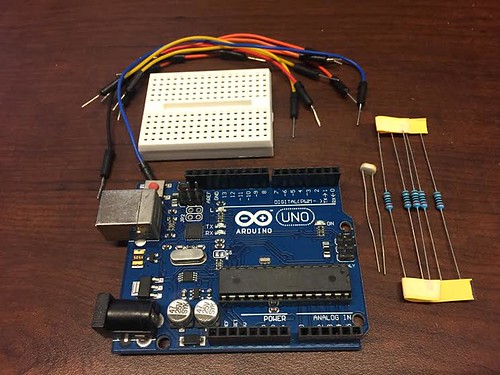As Digital Making comes to a close, I would like to reflect on how much I have learned and changed as a person due to this course. I had never expected a course to take up a lot of my time and make me still love every bit of it in the end. Through this class, my skill set has been taken to another level as I have learned so much about the maker movement and mindset, a set of workshop and design skills, and the ideating/prototyping process.
The Maker Movement and Mindset
Maker Movement
The Maker Movement was the center of discussion for the first few weeks of classes. This movement focused on individual or collaborated effort to produce new products or enhance existing products. The movement encourages and supports the use of open source softwares/hardwares and engineering oriented interests such 3D printing and electronics. Although the movement encourages the use of engineering-oriented pursuits, participants also could have hobbies in non-technological activities which can range from woodworking to traditional arts and crafts. It was in this first few weeks that we not only learned what the movement was, but what it was about. The movement is all about creating, innovating and and sharing, which is why we began these blogs, to share what we have made and learned!
Maker Mindset
The maker mindset is the way in which makers think. There’s many different ways of thinking of a product design. However, in this class we focused on Design for America’s thought process and Tim Brown’s method of Design Thinking. These two processes shared the similar idea of designing to meet an identified need in a technologically feasible way. You can read more about how we used our new maker mindsets in a Design for America workshop here.
Workshop and Design Skills
3D Modeling


In this class, we learned how to use TinkerCAD and Fusion 360. I have never 3D modeled before and it took me a lot of time and practice to get used to it. The more I kept trying to use the programs, the more I realized that the controls are actually very intuitive. My learning curve improved with Jeff Smith’s Fusion 360 workshop, but this skill was still in development for me and was probably my weakest skill.
Lasers and Woodworking


My first workshop in the FabLab was working with wood, Inkscape and laser cutters. Inkscape which was very similar to Adobe Illustrator. I’ve had experience with Adobe Illustrator , so I didn’t struggle too much with it. I found it so interesting that so much work came into preparing an image to be cut with a laser. From this workshop, not only have I learned how to cut and engrave with lasers, I have also realized how flexible these laser cutters are and how these laser cutters have a tremendous amount of applications and uses in product design. I found it very fun and expressive to work with lasers. Read more about the designing and laser cutting here.
Circuitry and Coding


Coding was something I was familiar with from my computer science years in high school. Circuitry however was a whole different area. I found it absolutely satisfying to be able to program something and see a physical response in the form of a blinking light. These two skills became increasingly important in creating our final project of a hydration wristband. Read about my first circuit experience here.
Soldering


Soldering was actually really interesting and fun to do once I got over my fear of being burned. The process of soldering was quite tricky at first bu once I realized that the led solder should be fed into the soldering iron rather than using the iron to put the led onto the object to be soldered. You can read more about my soldering experience here.
Ideating and Prototyping for our Final Project
This project first taught us how to identify problems and do research to help understand the consumers who we are trying to solve the problem for. We learned how to turn that research into smart product designs for the consumer and start prototyping using what we learned in design workshops at the FabLab to bring those designs into reality. We also learned how design audits can foster an innovative learning environment and help reveal flaws in function or design to help perfect a product. Finally, we learned that the process of bringing an idea to fruition is an exhausting and difficult process which takes time. In all, it was a learning experience that we would remember in the coming years of our lives. Read about our experience here, here and here.
Reflection
At the beginning of the course, I was hoping to be able to create something that was meant to help people. Looking back, these expectations were met with our groups prototype of the H2Go. This experience was much more difficult yet easier than I had expected. The difficulty came from putting it all together but what I found surprisingly easy is the skills which we learned in our mere semester in Digital Making. From this one semester, I learned more about myself than I thought possible from a class. I learned that I was capable of learning and creating incredible things. If I could learn how to do this, so can anyone. Being a part of the Maker Movement is so empowering.


